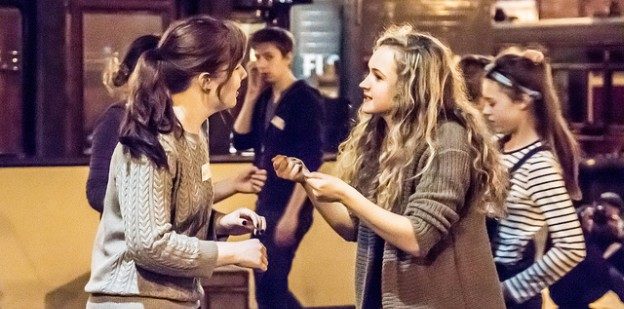This is Part 2 of a series documenting and analyzing the steps to producing an original improvised comedy show.
The more relaxed your actors are, the better their auditions will be.
I know it’s tempting to go down the tough director route, not showing emotion and being cold and calculating, but remember, these are people you will be working with in the future and you want to see their best in the few minutes you have to evaluate them. You’ll likely have to make some tough choices regarding who you will take and the differences are going to reveal themselves when the actors are at their best. Greet them warmly, be clear on your instructions (if there are rules to the games, make them available prior to the audition for actors to review), and ask them if they have any questions before starting a scene (clarity = quality).
There’s a reason that you do it in a collaborative way. You get a much richer result than if you were some kind of weird dictator.Lucky Johnston, Director, “Isn’t It Too Dreamy”
Your auditions should be in groups of 3-4 improvisers and include 2-3 different games that highlight aspects of your core show including: mood/feel, improv skills (edits, characters, objects, etc), show mechanics. You should also have a timer to keep you on schedule during the rehearsal. Just assume 20% more time than allotted. For instance, if you have two games that will be 9 minutes each (18 total) out of a 20 minute time slot, thus allotting yourself 2 minutes for explanations, you’re likely to go over a 20-minute audition block by 4-5 minutes. It’s best to plan your timing for 20% less than the allotted time slot. So, using the previous example, this would mean reducing the games to 7 minutes each (14 total plus 2 minutes instruction).
Scoring and Rating your Improvisers
I’m sure there are a ton of different methods for doing this, but I’ll introduce you to two. The first one is to take notes, positive and negative, about what the improvisers are doing on-stage during the audition. Then, at the end of the audition block, rate them on a 5 or 10 point scale based on your notes. This may include bonus points if two improvisers have an existing history working together as that familiarity may add to the overall quality.
The second method, which is what I used during my auditions, was to use +1/-1 (heavier on the plus marks) tick marks for each performer. I was looking for different improv skills being used (+1), such as strong characters, edits, and object work. I would only give 1 point for that skill, i.e. if it was used again they would not get an additional point. I would also give points for playing by the rules of the game. In my auditions, that meant keeping within a particular book title, genre, and setting.
Finally, additional points for following the goals of the show. In my case, this was if they were building on a story from scene to scene and there was a clear thread connecting those scenes. For Lucky Johnston, he assigned value to dynamically different characters. Do what is right for your show.
I was stingy about reducing points (-1), limiting it to behaviours that make the scenes more difficult for themselves and the other performers on stage. When the auditions were over, I then looked at the total number of points they had earned as well as the percentage of points they earned out of the total points given out in their audition block. Here’s a quick example:
Audition One
Bobby – 13 points (50%)
Jane – 9 points (35%)
Marc – 4 points (15%)
TOTAL: 26 points
Audition Two
Sarah – 10 points (37%)
Lyon – 9 points (33%)
Francis – 8 points (30%)
TOTAL: 27 points
In the above example, it’s clear that Bobby is a strong choice for the show. Comparing both audition groups, the total points awarded were similar so you could say that the the overall skill for the set was equal. In that regard, looking at just points we can’t decide between Jane and Lyon. Looking at percentages however, Jane moves slightly ahead which, if we’re honest, is the margins we use when selecting one cast member over another. That’s why I use this system, but it’s analytics heavy, which is not for everyone.
In the next part of the series I will cover the rehearsal process: planning, structure, and staying connected to your cast.
Featured Image: Audition Workshop by Nick Ansell (CC-BY-SA)
